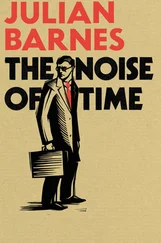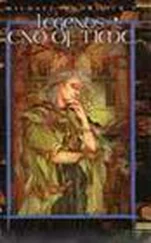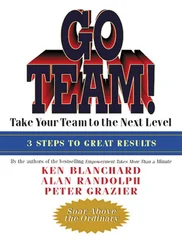group 278
spin 86–90, 157, 218
spinor fields 191
spiral galaxies 88
St Augustine 11
stars as clocks 97, 98
‘state’ 26
stationary points 172
stationary Schrödinger equation 230, 231, 232–5, 253
stationary states 230, 231
statistical behaviour 191
stellar clocks 97, 98
strata 345
stratified manifold 344
sufficient reason, principle of 64, 86, 156
Sun 12, 316–17
as a clock 97, 98
superposition 201–2, 210–12, 225
superspace 169, 348
superstring theory 39, 166, 192, 359
supersymmetry 192
syzgies 78
T
Tait, Peter 100–1
Tail’s problem 100–4, 135, 139, 144, 347
tensors 161, 191
Tetrahedron Land 43, 168
theory of everything 192
thermodynamics 23
Thomson, George 190
Thomson, James 123, 135
Thorne, Kip 166, 319, 336–7
3-spaces 171
time 17–19
absolute 20, 64, 83–5, 92, 119–20
arrow of 19, 25, 27, 34, 308
atomic 107
directionality of 19
ephemeris 107
equation of 98
experiencing 19–20
graffiti describing 44–5
and gravity 154–5
instants of 16, 18, 247, 265–6
intrinsic 245
length of 19, 100–2, 107, 123, 133, 173
‘line of 27–8
linearity of 19, 27–8
Newtonian 107
non-existence of 14–15, 35–8, 39, 247, 251, 309–11
proper 150, 175
sidereal 97, 98
solar 97, 98
time capsules 30–4, 251, 261, 264–7, 299, 300, 308
defined 31
time-dependent Schrödinger equation 230, 231, 258
time-independent (stationary)
Schrödinger equation 230, 231, 232–5, 253
time-like 148
time travel 328–9
timelessness 14–15, 35–8, 39, 247, 251, 309–11
Tipler, Frank 328, 341
transformation theory 206
trial pairing 171
Triangle Land 40, 41, 42, 45–6, 116–17, 344
Twain, Mark 338
two-and-a-bit puzzle 109
two-slit experiment 194–6
two-snapshots problem 92, 103
U
unbound states 235
unity of unities 75
universal equation 254
universe 22
chronology of 313–15
as a clock 107–8
expansion 262–4
modelling 40–6
order of 23
wave function of 242
V
Vaughan, Henry 328
vector fields 191
velocity 96, 97
group 278
Vilenkin, Alexander 352, 359
Voltaire 111
von Laue, Max 190
Vonnegut, Kurt 359
W
Walsch, Neale Donald 344
water-clock 95
wave function 194–205, 241–2
collapse 199–200, 204, 217–18, 224, 297
of the universe 242
wave mechanics 13, 189–90, 194–205
wave optics 270
wave packets 201, 205, 262, 275–81
wave theory of light 124, 125, 269–71
website 5, 7, 344
Weinberg, Steven 244
well behaved, conditions of being 254
Wheeler, John Archibald 38, 44, 136, 167, 169, 175–6, 246–7
Wheeler-DeWitt equation 38–9, 242, 247, 256, 351, 359
Whitehead, Alfred North 329
Wilczek, Frank 347
Williams, Tennessee 331, 332
Wootters, William 257
World, The 328
world line 140
X
X-rays 190
Y
Yeats, W.B. 322
Young, Thomas 124, 125
Z
Zeh, Dieter 264, 307, 338, 354
Zeilinger, Anton 360
Zeno’s paradox 49
The Story in a Nutshell
Preface
Acknowledgements
PART 1 THE BIG PICTURE IN SIMPLE TERMS
CHAPTER 1 The Main Puzzles
The Next Revolution in Physics
The Ultimate Things
Getting to Grips with Elusive Time
The Properties of Experienced Time
Newton’s Concepts
Laws and Initial Conditions
Why is the Universe so Special?
CHAPTER 2 Time Capsules
The Physical World and Consciousness
Time Without Time
Time Capsules
Examples of Time Capsules
CHAPTER 3 A Timeless World
First Outline
The Crisis of Time
The Ultimate Arena
Is Motion Real?
The Big Picture
PART 2 THE INVISIBLE FRAMEWORK AND THE
ULTIMATE ARENA
CHAPTER 4 Alternative Frameworks
Absolute or Relative Motion?
An Alternative Arena
CHAPTER 5 Newton’s Evidence
The Aims of Machian Mechanics
Apparent Failure
Space and Spin
Energy
CHAPTER 6 The Two Great Clocks in the Sky
Where is Time?
The First Great Clock
The Inertial Clock
The Second Great Clock
CHAPTER 7 Paths in Platonia
Nature and Exploration
Developing Machian Ideas
Exploring Platonia
PART 3 THE DEEP STRUCTURE OF GENERAL
RELATIVITY
CHAPTER 8 The Bolt from the Blue
Historical Accidents
Background to the Crisis
Einstein and Simultaneity
The Forgotten Aspects of Time
CHAPTER 9 Minkowski the Magician
The New Arena
From Three to Four Dimensions
Are There Nows in Relativity?
CHAPTER 10 The Discovery of General Relativity
Funny Geometry
Einstein’s Way to General Relativity
The Main Advances
The Final Hurdle
General Relativity and Time
CHAPTER 11 General Relativity: The Timeless Picture
The Golden Age of General Relativity
Platonia for Relativity
Best Matching in the New Platonia
Catching up with Einstein
A Summary and the Dilemma
PART 4 QUANTUM MECHANICS AND QUANTUM
COSMOLOGY
CHAPTER 12 The Discovery of Quantum Mechanics
CHAPTER 13 The Lesser Mysteries
Introduction
The Wave Function
Interpreting the Wave Function
States Within States
The Copenhagen Interpretation
Heisenberg’s Uncertainty Principle
The Enigmatic Gem
CHAPTER 14 The Greater Mysteries
Schrödinger’s Vast Arena
Correlations and Entanglement
The EPR Paradox
Bell’s Inequalities
The Many-Worlds Interpretation
A Dualistic Picture
CHAPTER 15 The Rules of Creation
The End of Change
Creation and the Schrödinger Equation
Quantum Mechanics Hovering in Nothing
CHAPTER 16 ‘That Damned Equation’
History and Quantum Cosmology
A Simple-Minded Approach
‘That Damned Equation’
PART 5 HISTORY IN THE TIMELESS UNIVERSE
CHAPTER 17 The Philosophy of Timelessness
CHAPTER 18 Static Dynamics and Time Capsules
Dynamics Without Dynamics
Why do we Think the Universe is Expanding?
The Idea of Time Capsules: The Kingfisher
CHAPTER 19 Latent Histories and Wave Packets
Smooth Waves and Choppy Seas
History Without History
Airy Nothing and a Local Habitation
Schrödinger’s Heroic Failure
CHAPTER 20 The Creation of Records
History and Records
The Creation of Records: First Mechanism
The Prerequisites of History
The Improbability of History
The Creation of Records: Second Mechanism
Читать дальше












